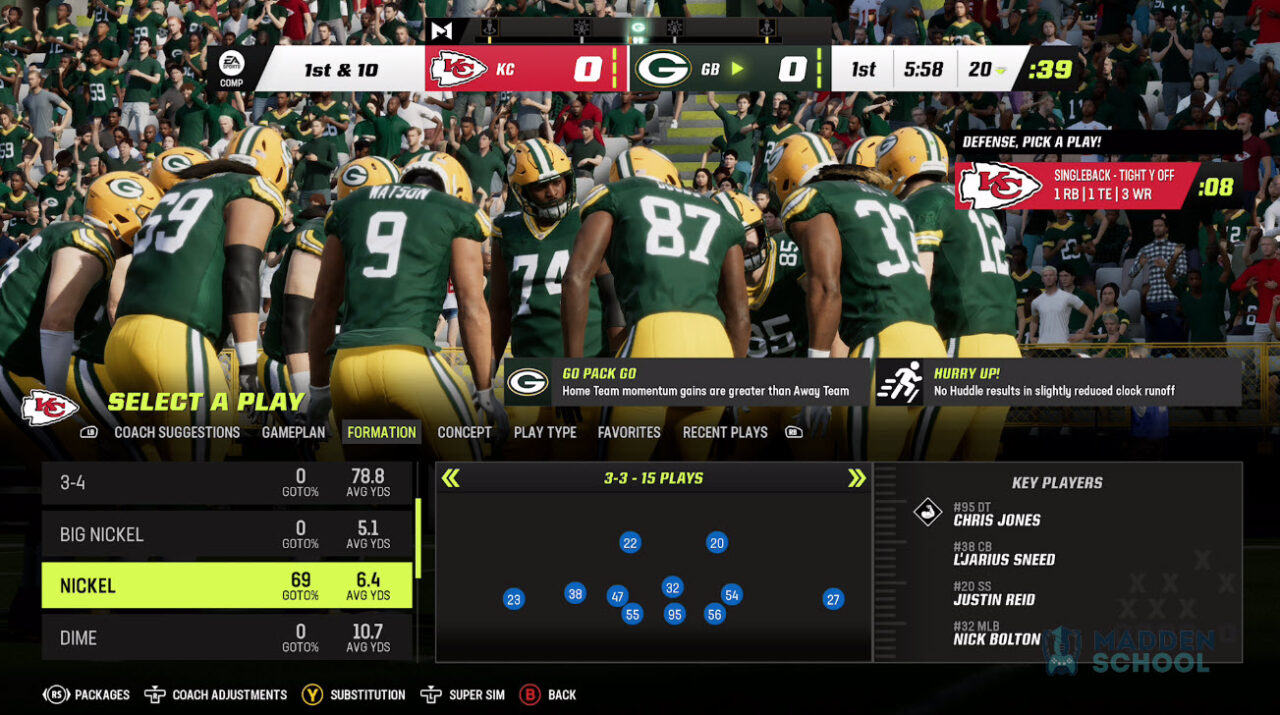In the world of college football, having a strong defensive strategy is crucial for success. The best NCAA 25 defensive playbook is designed to enhance team performance, minimize scoring opportunities for opponents, and adapt to various offensive schemes. This article will delve into the intricacies of the top defensive playbooks, providing insights and strategies that can elevate your team's game to the next level.
As the dynamics of college football evolve, so do the strategies employed by coaches and players. A well-structured defensive playbook not only outlines specific plays but also incorporates philosophies on tackling, coverage, and team communication. Understanding the best practices in defensive play will empower coaches, players, and fans alike to appreciate the art and science behind a successful defense.
In this comprehensive guide, we will explore the essential components of the NCAA 25 defensive playbook, breaking down formations, coverages, and key techniques that can make a significant difference in performance. Whether you are a coach looking to enhance your team's defensive capabilities or a player striving to improve your skills, this article is tailored for you.
Table of Contents
- Overview of NCAA Defensive Strategies
- Key Principles of Defensive Playbooks
- Types of Defensive Formations
- Understanding Coverage Schemes
- Effective Tackling Techniques
- Adjusting Strategies During Gameplay
- Best Practices for Coaches and Players
- Conclusion
Overview of NCAA Defensive Strategies
The NCAA 25 defensive playbook is built around a variety of strategies that aim to counteract the diverse offenses seen in college football. Understanding these strategies requires a grasp of both the fundamentals of football and the specific objectives of defensive plays.
Importance of a Solid Defense
- Minimizes scoring opportunities for opponents
- Creates turnovers and shortens the field for the offense
- Builds team morale and confidence
Evolution of Defensive Playbooks
Defensive playbooks have evolved significantly over the years. Traditionally focused on stopping the run, modern defenses must now adapt to high-powered passing attacks. This evolution has led to the incorporation of hybrid schemes that blend different defensive philosophies.
Key Principles of Defensive Playbooks
Effective defensive playbooks are built on several key principles that ensure players are prepared for any situation they may face on the field.
Discipline and Accountability
Each player must understand their role within the defense and execute their assignments with precision. This includes maintaining proper alignment and recognizing offensive formations to anticipate plays.
Communication and Cohesion
Strong communication among players is vital for a successful defense. This encompasses verbal calls and non-verbal signals that help players adjust to offensive movements in real-time.
Types of Defensive Formations
Understanding the various formations is essential for implementing an effective defensive strategy. Each formation serves a different purpose and can be tailored based on the opponent's offensive style.
4-3 Defense
The 4-3 defense features four down linemen and three linebackers. It is versatile, allowing teams to adjust to both running and passing plays effectively.
3-4 Defense
The 3-4 defense uses three down linemen and four linebackers, emphasizing flexibility and the ability to disguise blitzes, making it challenging for offenses to predict defensive movements.
Understanding Coverage Schemes
Coverage schemes are critical components of the NCAA defensive playbook. They dictate how defensive backs and linebackers cover receivers and tight ends, impacting the overall effectiveness of the defense.
Man-to-Man Coverage
In man-to-man coverage, defenders are responsible for covering specific offensive players. This scheme requires strong individual skills and communication among teammates to prevent mismatches.
Zone Coverage
Zone coverage involves defenders covering specific areas of the field rather than individual players. This approach can be effective against both passing and running plays, as it allows for better team support.
Effective Tackling Techniques
Tackling is a fundamental aspect of defensive play. Proper techniques not only prevent big plays but also ensure player safety.
Form Tackling
- Get low and maintain a strong base
- Wrap up the ball carrier securely
- Drive through the tackle to gain leverage
Open-Field Tackling
Open-field tackling requires quick decision-making and agility. Players must approach the ball carrier at an angle to limit their options and secure the tackle effectively.
Adjusting Strategies During Gameplay
In-game adjustments are crucial for a successful defense. Coaches and players must be prepared to modify their approach based on the flow of the game.
Recognizing Offensive Tendencies
Players and coaches should pay close attention to the opponent's tendencies, making real-time adjustments to counteract their strategies effectively.
Utilizing Timeouts Wisely
Timeouts can be a valuable tool for making necessary adjustments. Coaches should use them strategically to regroup and refocus the defense when needed.
Best Practices for Coaches and Players
Implementing a successful defensive playbook requires dedication and commitment from both coaches and players. Here are some best practices to consider:
- Regularly review and practice defensive plays
- Encourage open communication among players
- Analyze game film to identify areas for improvement
- Foster a culture of accountability and teamwork
Conclusion
In summary, the best NCAA 25 defensive playbook combines strategic formations, effective coverage schemes, and sound tackling techniques. By understanding and implementing these elements, coaches and players can develop a defense that stands strong against any offensive challenge. We encourage readers to engage with the content by sharing their thoughts, experiences, and further questions in the comments section below. Additionally, don’t forget to explore more articles on our site for further insights into the world of college football.
Thank you for taking the time to explore this comprehensive guide on the best NCAA 25 defensive playbook. We hope you found it informative and valuable in enhancing your understanding and appreciation of defensive strategies in college football. We look forward to welcoming you back for more insightful content!
The Name Of Shirine Boutella's Husband Is Investigating The Life Of The Rising Star.
According To Her Wiki, Alexandra Kay Is A Rising Star In The Music Business.
Mia Melano Bio: A Comprehensive Look Into The Life Of The Rising Star.


